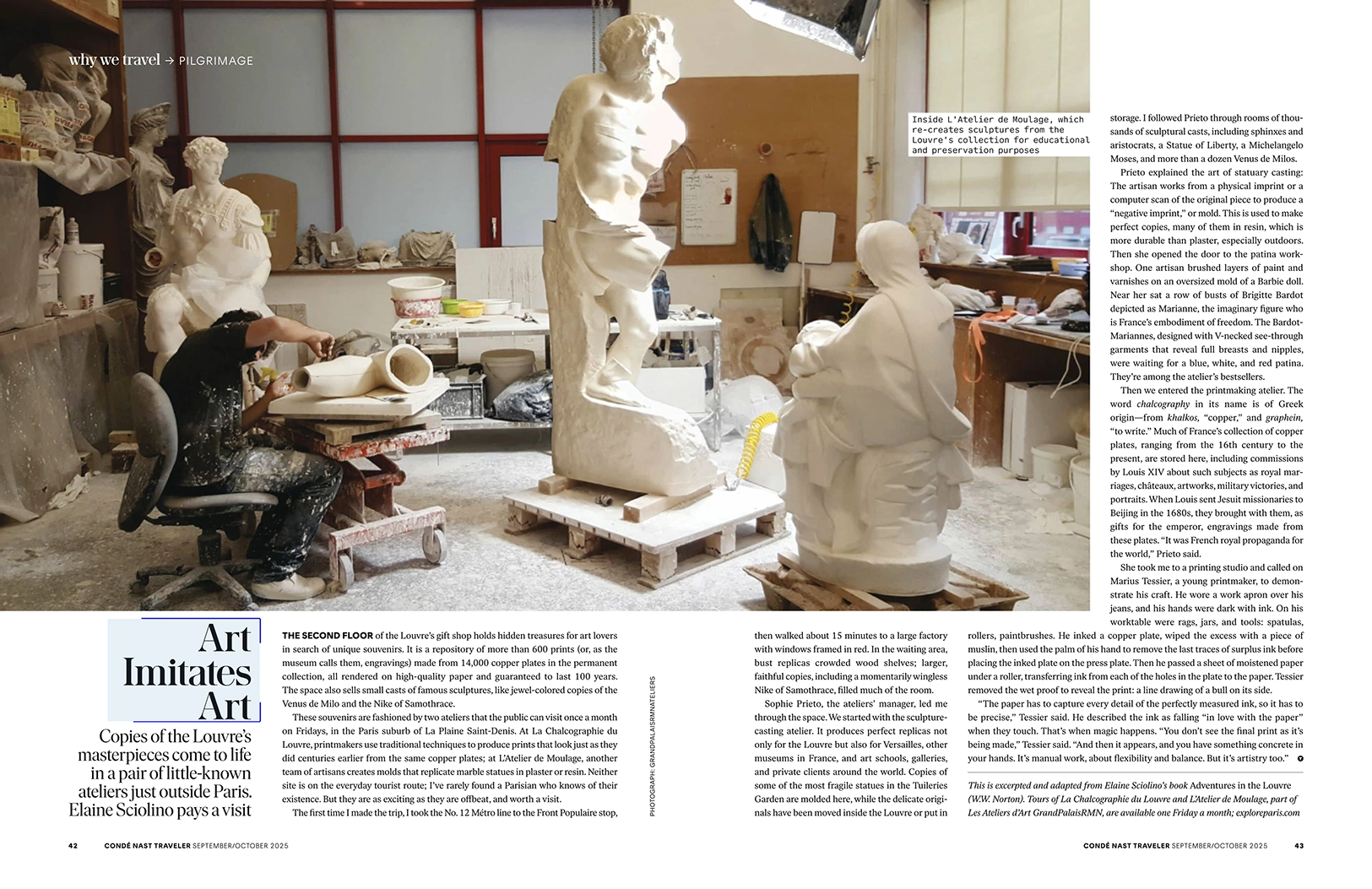 Go to English Version
Go to English VersionThis article has little of true interest. What catches my attention, however, is the way its original content has drifted from one outlet to another, as if there were nothing else in the world worth recounting. Perhaps it belongs to a secret chain of good fortune. This is my extract of an extract of yet another extract, and so on, until the original author dissolves into the distance. Take it as a nocturnal diversion and as a reiteration of the open secret that most cultural blogs venture into the fields to harvest the grain that will be baked into the bread of the mornings to come.
Art imitates itself.
Taken from Art Imitates Art. Copies of the Louvre’s Masterpieces Come to Life.
Condé Nast Traveler USA.
September–October, 2025
On the second floor of the Louvre’s gift shop lie hidden treasures for art lovers in search of singular souvenirs. There, more than six hundred prints are available, created from fourteen thousand copper plates belonging to the museum’s permanent collection. Each is produced on fine paper, guaranteed to endure a century. The shop also offers small replicas of celebrated sculptures, such as jewel-toned versions of the Venus de Milo and the Winged Victory of Samothrace.
These pieces originate from two ateliers on the outskirts of Paris, in La Plaine Saint-Denis. At the Chalcographie du Louvre, master printmakers employ the same traditional techniques used centuries ago, working still from the original copper plates. At the Atelier de Moulage, a different team of artisans produces molds that replicate marble sculptures in plaster or resin. Although far from well-known, these workshops provide an experience at once singular and enriching, distinct from the common tourist circuit.
The Atelier de Moulage produces flawless replicas not only for the Louvre, but also for Versailles, other French museums, art schools, galleries, and private collectors worldwide. Here, even the most fragile statues of the Tuileries Gardens are reproduced, while the originals are safeguarded indoors.
A walk through the atelier reveals storerooms brimming with thousands of casts: sphinxes and aristocrats, a Statue of Liberty, a Michelangelo Moses, and more than a dozen Venuses de Milo. The process begins with either a physical imprint or a digital scan of the original, used to create a “negative” mold from which identical replicas are cast—most often in resin, chosen for its greater durability compared to plaster, especially outdoors. Among the curiosities is a version of Marianne, symbol of the French Republic, designed with deliberately provocative transparencies; such reinterpretations rank among the atelier’s bestsellers.
The printmaking workshop, meanwhile, safeguards much of France’s copper-plate collection, spanning from the sixteenth century to the present and including commissions from monarchs: battles, portraits, and ceremonial occasions. In the seventeenth century, some of these engravings even traveled with Jesuit missionaries to Beijing, serving as instruments of cultural propaganda.
The printing studio still preserves the artisanal tradition: printmakers ink the plates, wipe away the excess with muslin, and run moistened sheets of paper under the press roller. The paper captures every incision in minute detail, bringing to life prints that combine technique, patience, and artistry. It is an art where manual skill and tradition converge, ensuring that the graphic and sculptural heritage of the Louvre is both preserved and diffused through time.

Art imitates Art. Copies of the Louvre's masterpieces come to life. Condé Nast Traveler USA. September - October, 2025










Comments powered by Talkyard.